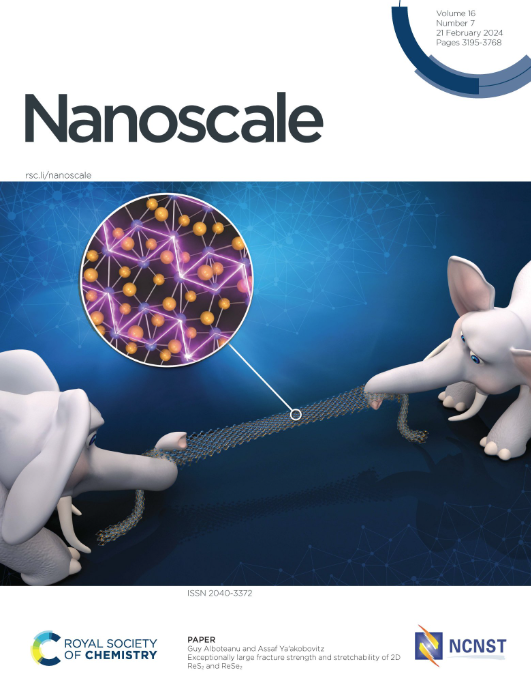Substitutional Mo Doping in Ta₃N₅ Photoanode: Mitigating Native Defects Engineering and Enhancing Water Splitting performance
IF 5.8
3区 材料科学
Q1 CHEMISTRY, MULTIDISCIPLINARY
引用次数: 0
Abstract
Ta3N5, with its 2.1 eV bandgap and favorable band edge positions, is a promising compound for solar water splitting. However, its performance is limited by defective states introduced during high temperature nitridation, particularly those based on reduced Ta species that act as electron recombination centers and can pin the Fermi level. Increasing electron density to extend the conduction band may suppress the formation of these states. Here we introduce combined theoretical and experimental study on Mo doping in Ta3N5, aiming to inhibit structural defects and enhance photoelectrochemical activity. Theoretical calculations reveal that Mo doping in Ta3N5 not only decreases the bandgap but also transforms the material from an indirect to a direct bandgap semiconductor. This transformation is attributed to the ability of Mo4+ ions, with comparable ionic radii and oxidation states for substitutional doping. This substitution introduces neutralizing acceptor states, effectively mitigating the formation of reduced Ta3+/Ta4+ states and nitrogen vacancies. As a result, charge carrier transport is enhanced, and recombination is suppressed. Additionally, the refractive index increases from 2.65 to 2.89 upon Mo doping, demonstrating improved optical performance for photoelectrochemical applications. Experimental results demonstrate a 4.3-fold enhancement in photoelectrochemical activity, alongside a 150-mV cathodic shift in the onset potential with substitutional Mo doping in Ta₃N₅. Moreover, the substitutional Mo doping does not induce lattice strain. These findings suggest that precise Mo doping in Ta₃N₅ has the potential to drive the development of innovative photoelectrochemical systems for practical solar fuel applications.求助全文
约1分钟内获得全文
求助全文
来源期刊

Nanoscale
CHEMISTRY, MULTIDISCIPLINARY-NANOSCIENCE & NANOTECHNOLOGY
CiteScore
12.10
自引率
3.00%
发文量
1628
审稿时长
1.6 months
期刊介绍:
Nanoscale is a high-impact international journal, publishing high-quality research across nanoscience and nanotechnology. Nanoscale publishes a full mix of research articles on experimental and theoretical work, including reviews, communications, and full papers.Highly interdisciplinary, this journal appeals to scientists, researchers and professionals interested in nanoscience and nanotechnology, quantum materials and quantum technology, including the areas of physics, chemistry, biology, medicine, materials, energy/environment, information technology, detection science, healthcare and drug discovery, and electronics.
 求助内容:
求助内容: 应助结果提醒方式:
应助结果提醒方式:


